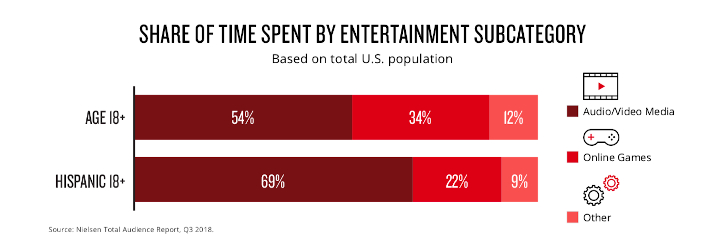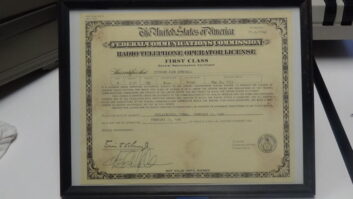A new report by Nielsen, “La Oportunidad Latinx,” reveals that radio is a powerful tool for reaching the loyal and savvy Latinx consumer.
Nielsen says it uses the term Latinx as a gender-neutral term, a more inclusive alternative to Latino.
The report found that radio is the medium that the Latinx market continues to gravitate toward. According to the Nielsen report, radio has the highest weekly reach among adult Hispanics, at 96% versus 92% for the total population. The survey also found that regardless of the media channel — be it audio, video or digital — the use of smartphone devices outreaches the use of PCs or tablets by large margins.
In understanding this market, it’s key to understand this market’s interest in music, the report found. Hispanic adults have the highest share of time spent on audio/video, at 69%. In contrast to the total U.S. population, adults report spending only 54% of their online time consuming audio/video.
[Read: Keeping Afloat in the Age of the Coronavirus]
With nearly 100% of Hispanics listening to some form of audio on a weekly basis — either on radio, smartphones or tablet — the report found that music/audio platforms should be a centerpiece of messages aiming to reach Latinx consumers.
Diving down deeper into smartphone usage, the report found that Latinx consumers are 51% more likely than the general population to have used their phone to listen to a local radio station, and 41% more likely to have used it to listen to internet radio. They are also 29% more likely to have listened to an online music service like Pandora or Spotify.
The report also found that users of voice-activated devices like Amazon Echo and Google Home are among music’s fastest-growing consumer bases. Hispanics make up 23% of those consumers that trend to early tech adoption, which is greater than their share of the total population.

The Nielsen report shares an example of how radio can be used to maximize reach within the Hispanic market. One advertiser, which had previously only advertised on TV, shifted 60% of its ad budget to radio. The move led to a 77% incremental increase in reaching Latinx listeners.
The report cites another local campaign in which another TV-only advertiser added Spanish radio to their media mix. Even without spending additional budget on their ad campaign, the move increased their reach to consumers by 57%, the report found.
The Latinx market is a powerful one, according to Nielsen. By 2023, the buying power of the United States Latinx population is expected to top $1.9 trillion. The 60 million Hispanics living in the United States constitute nearly a fifth of the total U.S. population. And Latinx consumers — the youngest minority group, with a median age of just 28 — are swiftly approaching their peak earning years, accounting for 75% of all U.S. labor force growth over the last six years, the report said.
A blog entry by Westwood One on the Nielsen survey noted that allocating 10% of an English-only buy to Spanish AM/FM radio generated a +41% reach increase among Spanish speakers.
“AM/FM radio makes your TV better,” wrote Pierre Bouvard, chief insights officer at Westwood One, part of radio station group owner Cumulus Media. “On average, allocating 20% of TV buy to AM/FM radio causes a massive +29% increase in Hispanic reach.”
He also highlighted the Nielsen survey’s finding that in a local market, the ability to reach Hispanics aged 18–49 increases dramatically when a TV-only buy is remixed with 60% of the budget moved to Spanish AM/FM radio.










